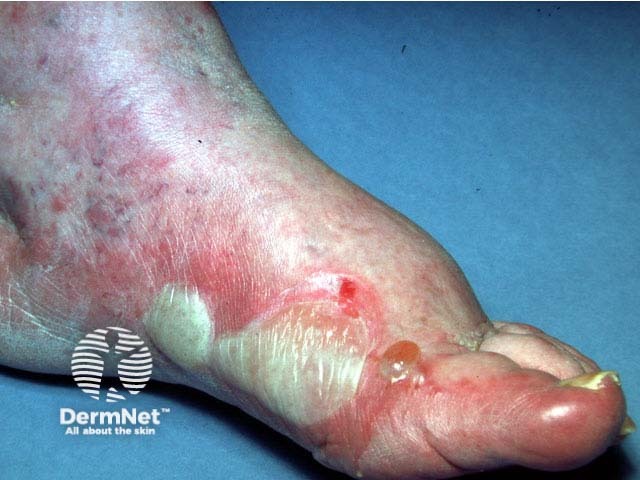Main menu
Common skin conditions

NEWS
Join DermNet PRO
Read more
Quick links
This quiz tests your diagnostic skills for blistering conditions affecting the feet.
Blisters are relatively common findings on one or both feet. They are formed by intraepidermal or subepidermal cellular separation. This may arise because of mechanical injury, infection, or immunological reaction to exogenous or autogenous factors. The blisters may be filled with clear or haemorrhagic fluid or pus.
For each of the ten cases, study the image(s) and then answer the questions. You can click on the image to view a larger version if required.
Each case should take approximately 2 minutes to complete. There is a list of suggested further reading material at the end of the quiz.
When you finish the quiz, you can download a certificate.

What is the cause of the blistering?
Acute contact allergic dermatitis
Describe the clinical features of this condition.
This patient has developed a unilateral irregular bullous eruption on the side of her foot. It turned out to be due to contact allergy to neomycin, which was in a cream she had applied to a small wound. Bullous contact allergic reactions are most often due to plants and medicaments. In some cases there is a phototoxic element i.e. the eruption occurs after exposure to ultraviolet radiation. The commonest phototoxic agents are tars, plants and oils containing furocoumarins, and drugs such as sulphonamides, tetracyclines, phenothiazides and NSAIDs. Blistering is a feature of acute eczematous reactions and may also be seen on the feet in atopic, nummular and venous eczema especially when they are secondarily infected.